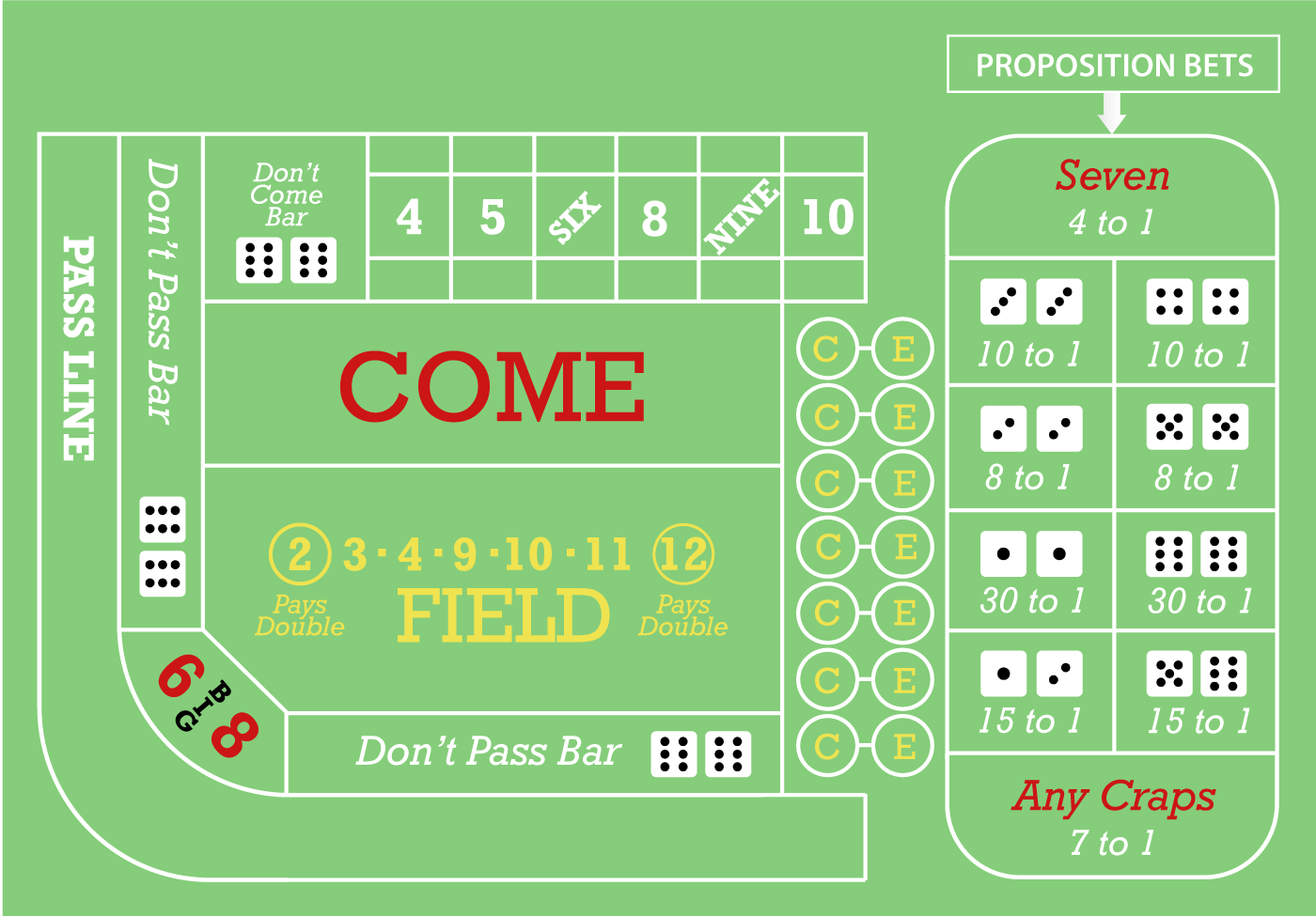Understanding Craps Lay Bets: Betting Against the Shooter

Title image credit: Serpeblu/Shutterstock
What Are Lay Bets in Craps?
In craps, lay bets are wagers placed against the shooter, predicting that certain numbers-specifically 4, 5, 6, 8, 9, or 10-will not be rolled before a 7 appears. This contrasts with place bets, where you win by betting that a chosen number comes up before seven. Lay betting is often referred to as “playing the dark side” or “the wrong way bet,” as it runs counter to the majority of craps table participants.
How Do Lay Bets Work at the Craps Table?
Lay bets are made on any of the box numbers (4, 5, 6, 8, 9, 10), predicting that the number selected won’t be rolled before a 7. It’s possible to lay more than one number at a time, though spreading out your bets in this way is generally discouraged due to increased risk. The fundamental rule is simple: if a 7 is rolled before your chosen number, your lay bet wins. If your number appears first, you lose the bet.
Why Should You Consider a Craps Lay Bet?
Lay bets appeal to those who prefer betting against the shooter, as they’re based on the probability of a 7 occurring before a specific number. This approach has a few notable advantages:
- The house edge is slightly lower on certain “dark side” bets compared to their “right side” counterparts.
- Lay bets provide flexibility in craps strategy, allowing you to adjust your approach based on the flow of the game and the shooter’s tendencies.
However, it’s important to note that the way the casino charges commission (also known as “vig”) on lay bets directly affects the house edge and the payout you’ll receive.
Commission Structure: Impact on House Edge and Payouts
The house edge and the true odds for lay bets depend mainly on whether the casino applies a commission to all lay bets or only to winning lay bets. Here’s how each scenario affects your edge and payout, summarized below:

Image credit: Davrizo/Shutterstock
| Commission Charged | Number Laid | House Edge | True Odds |
|---|---|---|---|
| All Lay Bets | 6 or 8 | ~4.0% | 6:5 |
| All Lay Bets | 5 or 9 | ~3.3% | 3:2 |
| All Lay Bets | 4 or 10 | ~2.5% | 2:1 |
| Winning Lay Bets Only | 6 or 8 | ~2.3% | 6:5 |
| Winning Lay Bets Only | 5 or 9 | ~2.0% | 3:2 |
| Winning Lay Bets Only | 4 or 10 | ~1.7% | 2:1 |
As these figures show, finding a casino where commission is applied only to winning lay bets gives the player a noticeable statistical advantage. Whether you’re at a physical casino or playing craps online, always verify the commission policy so you can make the most strategic decision.
Placing a Lay Bet: Step-by-Step Guide
Placing a lay bet requires a little know-how, as the chips must be tossed to the dealer and the correct announcement made. Follow these steps:
- Decide which box number(s) you want to lay against: 4, 5, 6, 8, 9, or 10.
- Hand (or toss) your chips to the nearest dealer and clearly state your bet (e.g., “Lay the 6!” or “Lay the 8!”).
- Be sure to wager the correct amount, considering both the required true odds and a 5% commission (vig), which is standard in most casinos.
The minimum wager (the “amount laid”) is calculated based on odds:
- 6 or 8: Lay $6 to win $5, plus a commission (typically $1 minimum).
- 5 or 9: Lay $3 to win $2, plus commission.
- 4 or 10: Lay $2 to win $1, plus commission.
Always confirm the minimum commission and ensure your total wager covers both the principal and the vig.
Practical Example: Lay Bets in Action
Here’s how lay bets play out with real sums on the table:
- To win $20 by laying the 6 or 8 (6:5 odds): Bet $24 and add a $1 commission, handing the dealer $25 total.
- To win $20 by laying the 5 or 9 (3:2 odds): Bet $30, include the $1 commission, and give $31 to the dealer.
- To win $20 by laying the 4 or 10 (2:1 odds): Bet $40, pay $1 commission, and present $41 for your wager.
If you’re placing multiple lay bets at once (e.g., both 4 and 10), double the amounts accordingly and always factor in the commission for each separate bet.

Strategic Considerations When Using Lay Bets
Choosing when to lay bets is often based on the general mood of the table and the performance of individual shooters. In live casinos, observing “hot” or “cold” shooters can help you decide when to use lay bets versus sticking with place bets. Laying bets works best when you sense that shooters are on a losing streak or lacking experience. Conversely, during hot streaks, place bets may offer better returns.
Influence of Table Timing
There’s also a timing aspect-physical casinos typically swap out dice late at night, around 3 AM. When new dice are introduced, their uniformity and sharp edges produce more random results, aligning favorably with the probabilities behind lay bets. This period can offer a slight statistical edge for players betting on the dark side, as outcomes will be closer to theoretical odds.
Are Craps Lay Bets Worth It?
Lay bets in craps offer the rare opportunity to bet with the house, but their value depends on several variables. While they provide a strategic edge under certain conditions (such as new dice or inexperienced shooters), several drawbacks must be considered:
- You may face social pushback from other players, as your win typically means their loss.
- Lay bets require a larger upfront stake to win smaller payouts, and you must always pay a commission, win or lose (in most casinos).
- The overall profitability of lay bets is limited by these commissions and by the odds structure itself.
Strategically, some players may find better value in buying the 4 or 10 instead, as this approach can marginally reduce the house edge and the total commission paid over time.
Common Pitfalls and Disadvantages of Lay Bets
Despite their situational benefits, lay bets are typically less popular due to their high cost and social dynamics at the craps table. Key disadvantages include:
- Costs can add up quickly, requiring large wagers for relatively small payouts and additional vig.
- Most casinos charge the commission regardless of whether the lay bet wins or loses, making them more expensive over time.
- Betting against the majority isn't always enjoyable, and can make for an awkward table experience.
If you’re seeking to keep the house edge as low as possible, evaluating alternative bets (such as buying numbers) might offer a better balance of risk, reward, and social comfort.
Advance Your Craps Knowledge Further
Once you’re comfortable with lay bets, you might want to broaden your understanding with other essential craps wagers and strategies. Check out these in-depth resources:













